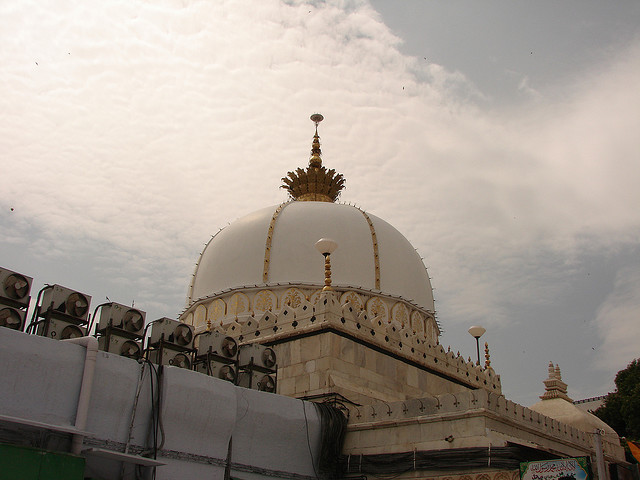One of the most famous pilgrim center in Ajmeer, the Dargah Sharif, is the burial ground of the Sufi saint Khwaja Moin-Ud-Din Chist. This shrine is visited by millions of people every year and regarded as a holy place by devotees of all religion.
Situated in the heart of the city, the Dargah Sharif replicates the superb texture of Mugal architecture. The dargah is to be best visited on the holy occasion of annual Ur festival, when the shrine is decorated marvelously. The popular belief is that every wish from a pure heart would be fulfilled after praying here in this sacred place.
The Dargah of Moinuddin Chisti is situated at the northern foot of Taragarh Hill. It hosts a mausoleum which contains the Tomb of Saint Moinuddin Chisti. The Dargah also has two Buland Darwazas which were built with the financial aid received from Sultan Ghyasuddin Khilji. The main entrance of the Dargah was built by H.E.H. Nisam Usman Ali Khan of Hyderabad. The Dargah Sharif also has a Naqqar Khana (Drum House) which boasts of two naqqars that were presented by Akbar to the Dargah at one of his victory. Akbar was one of the first Mughal rulers to visit the place barefoot. The Dargah also has other tombs and attractive buildings which are examples of excellent Mughal architecture.
Khwaja, who is popularly called as the saint of the poor, is believed to have shut himself in a room for long six days in his last days. This renowned pilgrim centre is the contribution of the mighty Mugals and it is told that Emperor Akbar himself came barefoot to pray to the almighty. The Dargah of Khwaja Moinuddin Chishti includes numerous lovely marble buildings, which overlooks to a courtyard. Other conspicuous structure consists of a mosque, the Akbari Masjid, a massive gate and the tomb of the saint.
It is open from 5 am to 9 pm during winters and from 4 am to 10 pm in summers.
Image Credit:

Born in Chisti region in Afghanistan, Saint Moinuddin Chisti was above the material and worldly things. In his process to teach mankind the high way of living he came to India and settled in Ajmer. There, he attracted large number of followers which even included kings and other people of high rank. In Ajmer he practiced the Sufi Sulh-e-Kulh which focused on Hindu-Muslim unity.
